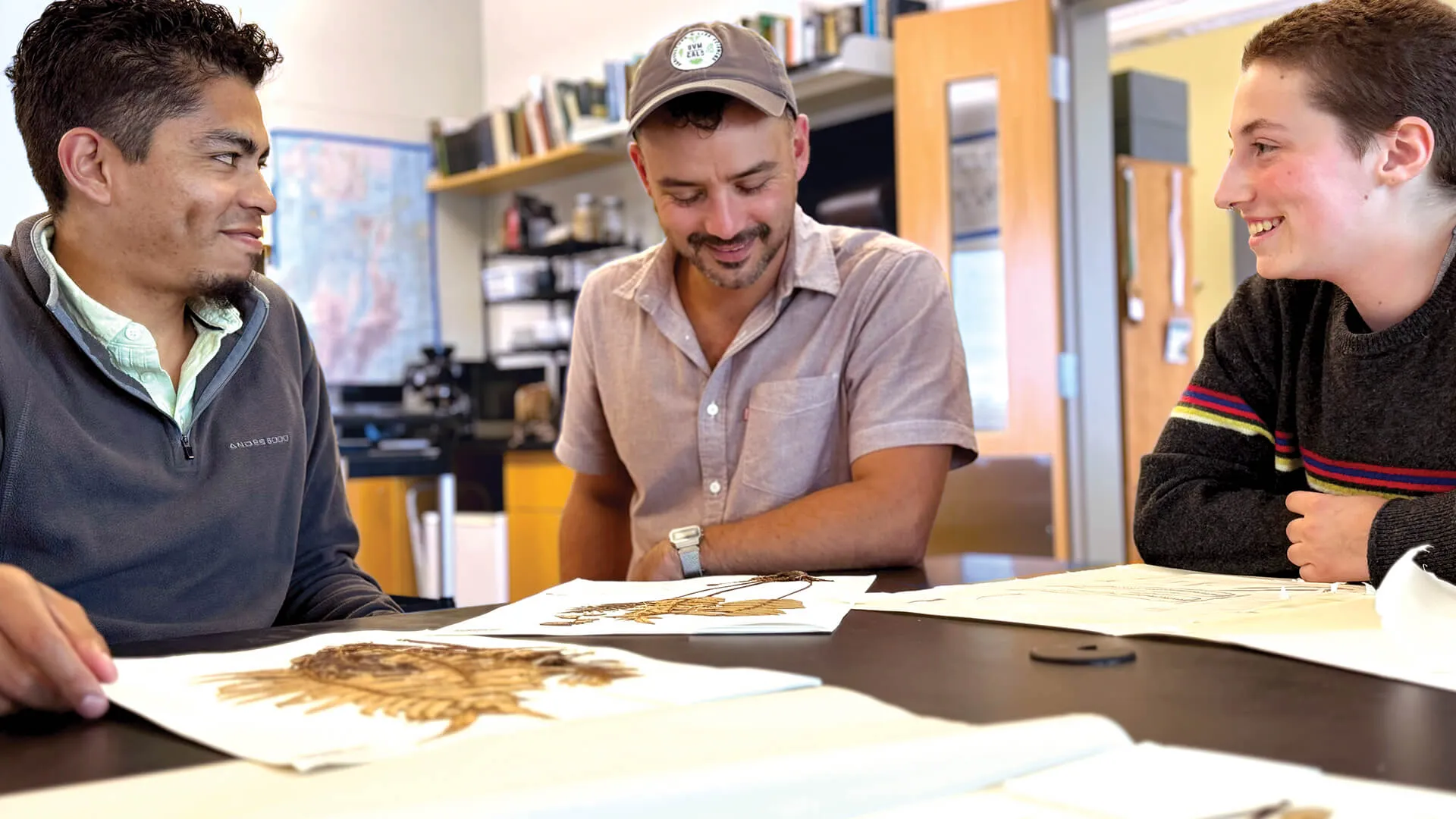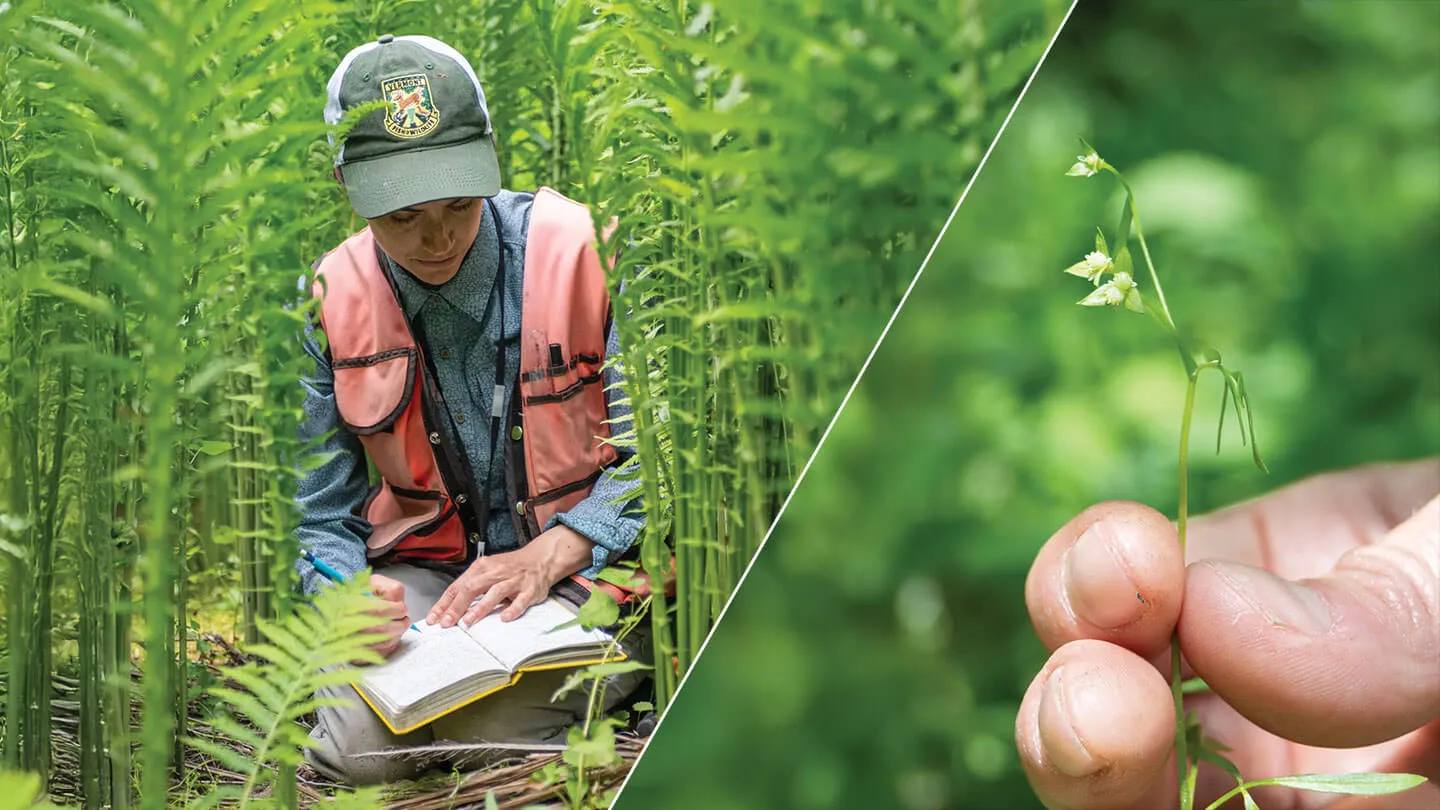Grace Glynn G’20, the Vermont state botanist with the Department of Fish and Wildlife and a graduate of UVM’s Field Naturalist Master’s Program, received a flurry of media attention last June when she rediscovered false mermaid weed (Floerkea proserpinacoides), a plant not seen in Vermont for over a century. She was interviewed over 20 times and appeared in a lengthy story in the New York Times.
Glynn says she jumped up and down and shouted in excitement when she discovered the plant. It all started when a colleague, turtle biologist Molly Parren, sent Glynn a photo she’d taken in the field of another endangered plant.
“Something caught my eye in the corner of the photo,” says Glynn. “And it was Floerkea!”
False mermaid weed is what’s known as a spring ephemeral plant. It emerges in April, produces a small, white, radially symmetrical flower head less than a centimeter wide, and is dormant again by June. Its seeds resemble tiny seashells. The common name derives from its resemblance to marsh mermaid weed, an aquatic plant that can also grow on muddy riverbanks. For four years, Glynn had been searching for false mermaid weed during its short spring growth window in the hopes of finding it.
“I just could not believe it,” says Glynn. “I had imagined finding this species many times in my head. But this wasn’t the way that I ever thought it would happen.”

Something New
For more than six years, Assistant Professor of Plant Biology Weston “Wes” Testo G’18 has worked with a research colleague, Sonia Molino, a fellow fern specialist from the Department of Biosciences at the Universidad Europea de Madrid, to study Parablechnum—the most diverse genus in the fern family Blechnaceae, with about 70 species known globally. They have published several related research articles, frequently drawing from the important collection of fern specimens at UVM’s Pringle Herbarium. With nearly 400,000 plant specimens from around the world, the Pringle Herbarium is one of the largest in the Northeast. Nearly 40,000 of Pringle’s specimens are ferns, helping make UVM a hub of global fern research. Many of the specimens in the collection represent species that remain undescribed to science.
The team, which included UVM doctoral student José Nicolás Zapata and undergraduate Deli Heal, focused on a fern from the Cordillera del Cóndor, a mountain range along the border of Ecuador and Peru, home of the indigenous Shuar people, that is famous among tropical biologists for its many endemic species. This isolated and geologically distinct area is home to a remarkably unique flora. The diminutive fern they focused on only grows upon sandstone cliffs along small rivers in the cordillera, and had been collected on two different occasions in 2006.
In an article published this February in the journal Brittonia, the team provided the first complete description of the new species. They also had to decide what to name it, and settled on Parablechnum shuariorum, in honor of the Shuar people and their efforts to conserve the habitat of this and other rare Cordillera del Cóndor species.
